The Battle of the Wedges: 50 vs. 52 Degree Wedge
- Last updated on February 5, 2024
- Toni Benedito
- Golf Equipment & Gear, Blog
Choosing between a 50-degree and 52-degree golf wedge depends on your playing style, skill level, and shot requirements. Typically, high handicappers find a 50-degree wedge more manageable and favor it, while mid-level players prefer the versatile 52-degree option for longer shots and green versatility. Understanding the unique characteristics of these clubs and when to use each can enhance your short game, help you navigate challenging bunker shots, and help you target tight pin positions more effectively.
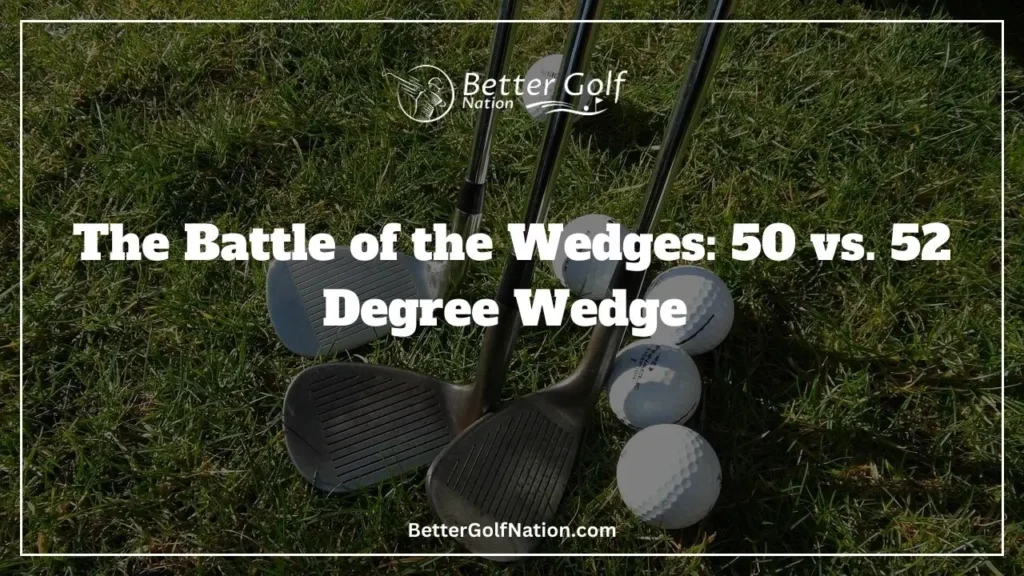
Key Takeaways
- Wedge Types and Importance: Understanding the various wedge types, including sand, lob, pitching, and gap wedges, is crucial for every golfer. Wedges play a critical role in achieving high-trajectory shots and precise distance control.
- 50 vs. 52-Degree Wedge Distinctions: Choosing between a 50-degree and a 52-degree wedge involves key differences. The 50-degree offers more distance with a lower loft, suitable for average players, while the 52-degree provides precision for mid-handicappers with a higher loft angle.
- Gap Wedge Functionality: The gap wedge, available in 50 and 52 degrees, serves as a pivotal club bridging the gap between pitching and sand wedges. Its versatility aids in controlling distances, especially for mid-handicappers seeking improvement in their long game.
- Tips for Effective Usage: Mastering the use of 50 and 52-degree wedges involves knowing yardages, employing a controlled swing, excelling in greenside bunker shots, and experimenting with trajectory. Understanding these nuances enhances a golfer’s short-game performance.
- Considerations in Choosing Wedges: The decision between a 50 and 52-degree wedge depends on individual preferences, playing style, and specific needs. Evaluating factors such as player type, distance requirements, and personal playing style is essential. Brands like Callaway Wedges offer quality options for golfers seeking the right wedge for their game.
Introduction
Golf wedges are clubs used to make short-range shots, typically within 120 yards of the hole. They come in different types with varying lofts (the angle formed between the face of the club and a vertical surface). The most common wedges used in golf include pitching wedges, gap wedges, sand wedges, and lob wedges.
The two most popular types of wedges that golfers use are 50-degree and 52-degree wedges. While these two clubs might seem similar on the surface, there are significant differences that can have an impact on your game.
In this article, we will take an in-depth look at these club options to help you choose which one is best suited for your needs. Choosing between a 50-degree and 52-degree wedge depends on several factors, like skill level and style of play.
Enjoying this article? Read more:
Check out this video below from Mike Bury‘s YouTube channel where he talks about which loft wedges you should be using:
Typically, mid-handicappers or average players tend to choose the 52-degree option, while high handicappers opt for the more manageable 50-degree one. The hybrid nature of the former makes it easier to use for those who prefer longer shots while benefiting from its versatility around greens.
When it comes down to it, learning how to use both clubs effectively can be hugely beneficial for improving your short-game skills. Understanding when to use each type of club can help you navigate tricky bunker shots or target tight pin positions with ease.
Choosing between a 50- or 52-degree wedge ultimately comes down to personal preference, but understanding their differences is crucial when making that decision. Whether you’re playing competitively or just trying to improve your long-term game performance, mastering these essential tools of the trade—Callaway Wedge being a reliable brand—is key!
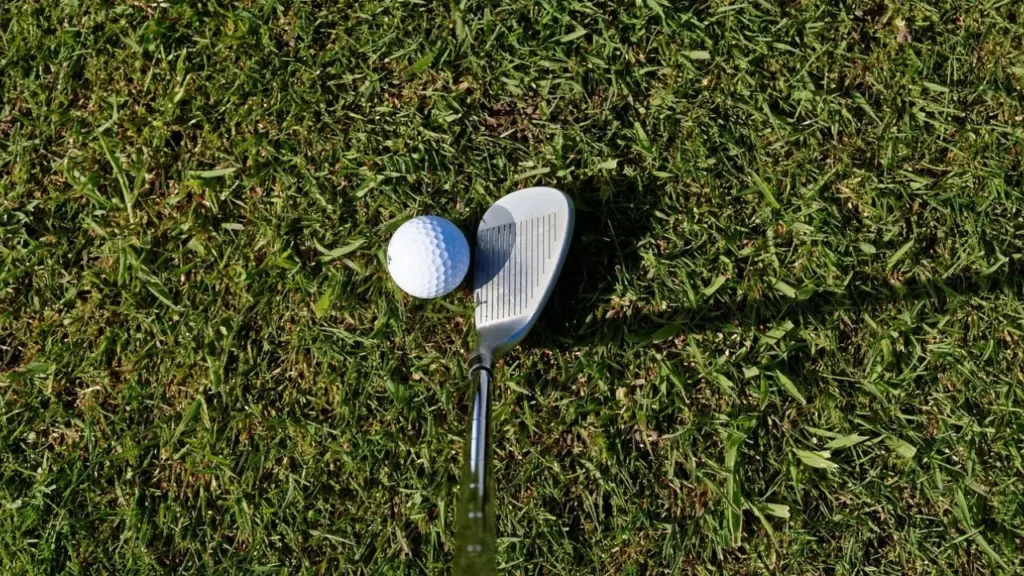
Understanding Golf Wedges
To be an effective golfer, you need to have a solid understanding of the numerous types of clubs in your bag.
One of the most important groups is the wedges, which are designed to help you get your ball as close as possible to the green. The wedge category includes sand wedges, lob wedges, pitching wedges, and gap wedges.
Each wedge type differs in shape and loft angle, making them ideal for different scenarios. Wedges play a critical role in golf because they enable players to hit high-trajectory shots and control distances with great precision.
They’re also useful for getting out of tricky situations like greenside bunkers or tight lies near the green. When choosing new equipment or looking to improve your game, you need to understand how each type of wedge can help or hinder your performance.
Mid-handicappers usually carry three types of wedges: pitching wedges (PW), sand wedges (SW), and sometimes a gap wedge (GW). As average golfers don’t hit crisp iron shots all the time, that’s where gap wedges enter the picture; they bridge the distance between two clubs that are not consistent in terms of carry yardage.
"To be an effective golfer, you need to have a solid understanding of the numerous types of clubs in your bag. One of the most important groups is the wedges, which are designed to help you get your ball as close as possible to the green."
The right wedge for you will depend on several factors, such as your handicap level, swing speed, course conditions, and playing style, among others. However, most players tend to overlook these important variables when choosing their equipment, leading to frustration on the course.
Therefore, every golfer must understand their gameplay and what suits them best before investing time and money in new gear. Understanding golf clubs is crucial for any player looking to improve their game since it gives them more control over their long- and short-game shots.
When it comes down specifically to the variety of wedges available, it ranges from sand wedges up to lob wedges, with each type’s purpose specific to different swings or scenarios on a course that should never be overlooked. A right wedge is a necessary tool for any golfer looking to score better by improving their accuracy around the greens and controlling their distance on the fairway.
Enjoying this article? Read more:

50 vs 52 Degree Wedge: The Basics
Let’s dive into the basics of the 50-degree vs. 52-degree wedge debate. Now, for those of you who may be new to golf or have not yet explored the world of wedges, let me give you a brief rundown. Wedges are an essential part of any golfer’s bag and are primarily used for shots that require loft and control around the green.
There are many different types of wedges available, including gap wedges, sand wedges, lob wedges, and pitching wedges. But we’re here today to talk specifically about the 50-degree vs. 52-degree wedge.
These two clubs are often used interchangeably by golfers due to their similarities in loft and distance. However, there are some key differences between the two that could make all the difference in your game, depending on how you use them.
So what exactly is the difference between a 50-degree wedge and a 52-degree wedge? Well, it all comes down to distance control.
The 50-degree wedge offers slightly more distance than its counterpart due to its lower loft angle. This makes it a popular choice among average players who need more versatility when it comes to shot selection.
"Wedges are an essential part of any golfer's bag, primarily used for loft and control around the green. The 50-degree wedge offers more distance, favored by average players for versatility, while the 52-degree wedge suits mid-handicappers for precision in short shots."
On the other hand, the 52-degree wedge is better suited for mid-handicappers who need more precision when it comes to short shots around the green. The higher loft angle allows for better control over trajectory and spin, which can come in handy when faced with tough bunker or chip shots.
Now I know what some of you may be thinking: why not just stick with one wedge? While that strategy may work for some golfers, I firmly believe that having both a 50-degree and a 52-degree wedge in your bag can make all the difference when it comes to improving your game.
But here’s where things get tricky: Figuring out when to use each club can take some practice and experimentation on your part. It largely depends on your handicap level and personal play style.
However, a good rule of thumb is to use the 50-degree wedge for longer shots around the green and the 52-degree wedge for short chips and pitches. So there you have it, folks—the basics of the 50 vs. 52-degree wedge debate.
Ultimately, the choice of which club suits you best comes down to individual preference and playing ability. But if you can master both clubs and when to use them, you’ll be well on your way to taking your game to the next level.
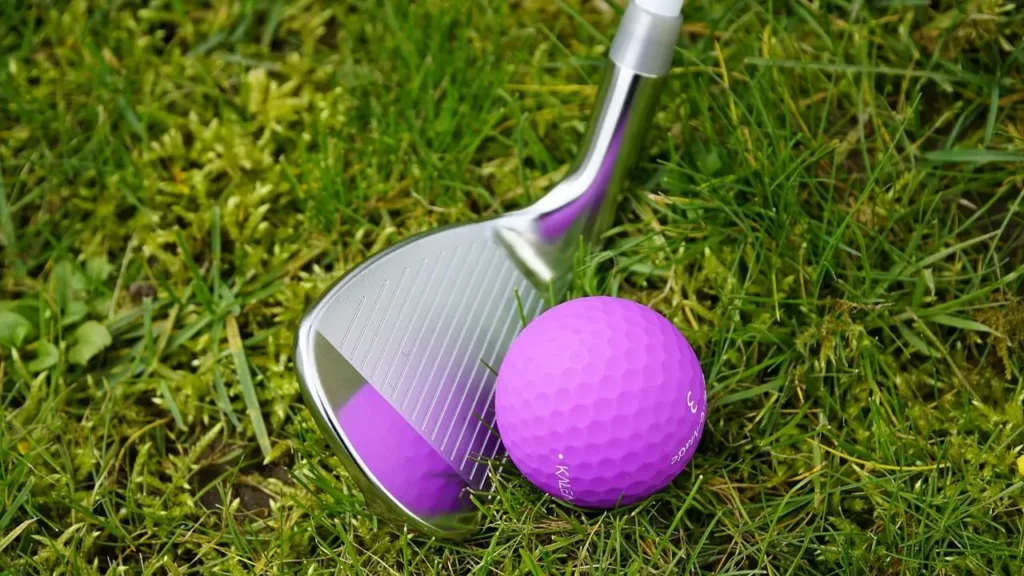
The Gap Wedge: 50 vs 52 Degree
The gap wedge is one of the most important clubs in every golfer’s bag, and choosing the right degree can make or break your short game. When it comes to the gap wedge, 50 and 52 degrees are two popular options, and each has its own unique advantages and disadvantages.
The 50-degree wedge is typically considered a pitching wedge or approach wedge, and it can be used for a variety of shots around the green. It has a slightly lower trajectory than its higher-degree counterparts, making it great for controlling shots on windy days.
Additionally, this club is ideal for mid-handicappers who are looking to improve their long game since it can be used as an alternative to a hybrid or long iron. On the other hand, the 52-degree wedge is often referred to as a gap or approach wedge because of its ability to fill in the distance gap between your pitching and sand wedges.
It has more loft than a pitching wedge but less than a sand wedge, making it perfect for those in-between yardages that require more control around greenside bunkers. When comparing these two wedges side by side, there are some significant differences worth noting.
For instance, while both clubs offer good control around fairways and greenside bunkers, the 50-degree wedge offers better performance on full swings due to its lower loft angle. At the same time, golfers seeking greater versatility may find that they prefer using a 52-degree club instead because of its higher loft angle, which makes hitting high-arching shots from awkward lies relatively easy.
So how do you decide which one suits you best? Consider your current equipment set-up first: do you have other wedges with similar lofts already in your bag?
If not, then perhaps consider adding both clubs since they serve different purposes. However, if you must choose only one, then focus on what shot types you struggle with most around greenside bunkers as well as on full swings in the long game.
Ultimately, choosing between a 50- and 52-degree wedge comes down to preference and what works best for your playing style. Experiment with both clubs on the course or during practice sessions to determine which one you feel most comfortable with.
Enjoying this article? Read more:
Check out this video below from Golf Sidekick EXTRAS‘s YouTube channel discussing which wedge you should play:
Comparing the 50 and 52-degree wedges
When comparing the 50- and 52-degree wedges, it’s essential to understand what makes them unique. Both wedges are considered gap wedges; however, they differ in loft by just two degrees.
The primary function of the gap wedge is to fill a distance void between your pitching wedge and sand wedge. If you’re a mid-handicapper, this club could be your best friend on the course.
The choice between the 50- and 52-degree wedges often boils down to personal preference. Some golfers prefer the added loft of a 52-degree wedge, while others choose a flatter ball flight with less loft from a 50-degree wedge.
Choosing between these two clubs depends on several factors, such as your handicap, swing speed, and style of play. For players who rely heavily on their long game, choosing a 50-degree wedge may be ideal since it provides more yardage than its counterpart; however, that doesn’t mean that the higher-lofted option should be disregarded entirely.
For example, when hitting shots from deep fairway bunkers or around greens with little green to work with, a 52-degree sand wedge might give you more control over your shot. When it comes to choosing between brands for wedges, there are many excellent options available on the market today.
However, some brands stand out from the competition in terms of quality and performance. Titleist Vokey SM8 is one such brand that offers several lofts, such as 50/12 F grind and 52/12 F grind, suitable for most golfers.
Overall, both clubs have their benefits. It’s up to each player to determine which one will help them improve their game based on distance control or ball flight needs; smaller gaps or more yardages mean different preferences for different people. The best advice would be to always have both clubs at hand since these gap wedges are versatile tools that come in handy when struggling with yardage control or hazards, and you never know when to use them.
Enjoying this article? Read more:

Choosing the Right Wedge: Factors to Consider
Selecting the ideal wedge is a crucial decision that can significantly impact your golf game. The choice between a 50-degree and a 52-degree wedge involves careful consideration of various factors. Here’s a breakdown to guide you through this decision-making process:
Factors to Consider
Player Type
- Determine whether you are an average golfer playing for enjoyment or a more serious mid-handicapper aiming to enhance your game.
- Your player type will influence the wedge that best suits your playing style.
Distance Preference
- Consider how far you want your ball to travel with each shot.
- Opt for a 50-degree wedge if distance is a priority, as it offers more power compared to the 52-degree counterpart.
Playing Style
- Reflect on your preferred shot trajectory – whether you tend to hit high or low shots.
- A 52-degree wedge is ideal for those favoring high shots, as its loft provides more lift during impact.
Brand Consideration
- Explore reputable brands like Callaway Wedges, known for quality clubs catering to every golfer level.
- Gap wedges within the wedge family, offered by brands like Callaway, provide forgiveness, better control, and consistency for players seeking improvement.
Choosing between a 50-degree and a 52-degree golf wedge is a decision not to be taken lightly by average players. Take your time, weigh each factor meticulously, and consider your preferences. By contemplating player type, distance requirements, playing style, and reliable brands, you can confidently find the perfect wedge to elevate
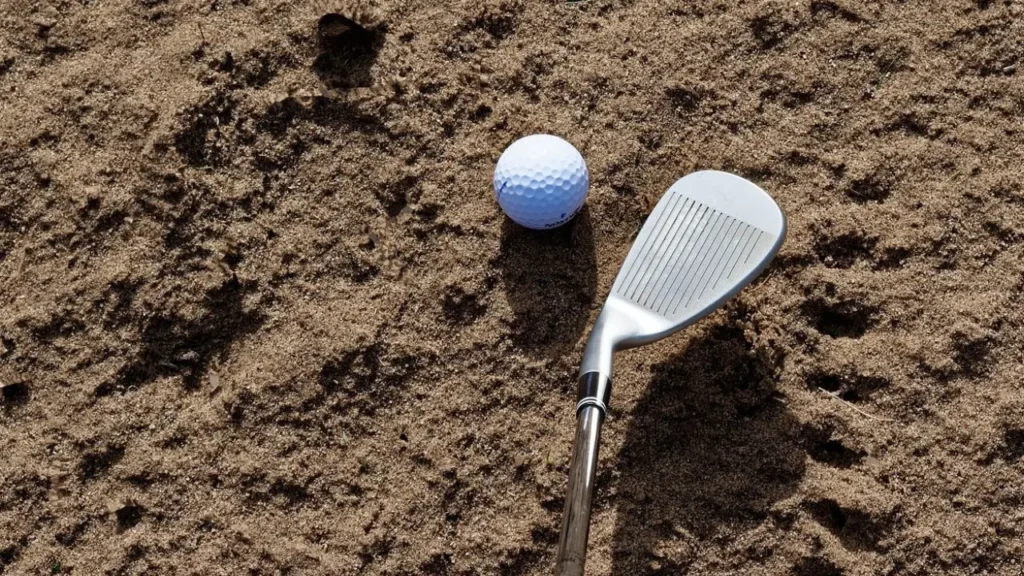
Enjoying this article? Read more:
Check out this video below from Golf Sidekick EXTRAS‘s YouTube channel discussing which wedges you need:
Pros and Cons of the 50 and 52-Degree Wedges
When faced with the decision between 50- and 52-degree wedges, there exists a multitude of pros and cons for each option. This analysis delves into the distinctive characteristics of both wedges to assist golfers in making an informed choice based on their playing style and needs.
Pros and Cons:
50-Degree Wedge
Pros:
- Functions as a gap wedge, aiding average players struggling with distance control in the short game.
- Enhances accuracy on approach shots, making them more precise.
Cons:
- Limited loft may hinder escape from challenging greenside bunkers or executing high, soft landing shots.
- Redundant if a set already includes a gap wedge with a larger loft angle, such as 52 degrees.
52-Degree Wedge
Pros:
- Provides more loft than pitching or gap wedges, enabling higher shots with quick stops on the green.
- Ideal for golfers seeking better control over ball flight and precision in tight spots around the green.
Cons:
- Potential drawback as it may not offer sufficient yardage compared to other wedges like lob or sand wedges.
- Limited versatility in distance control from various lies or areas on the course.
In summary, both the 50 and 52-degree wedges come with their distinct benefits and drawbacks, tailored to individual playing styles and requirements. A thorough evaluation of your own game is crucial before determining which wedge suits you best.
Brands like Callaway Wedges and Vokey Design Wedges offer both options, empowering golfers to choose the wedge that aligns with their unique preferences. The decision ultimately rests in your hands, allowing you to optimize your game with the wedge that provides the most significant advantage.
Enjoying this article? Read more:
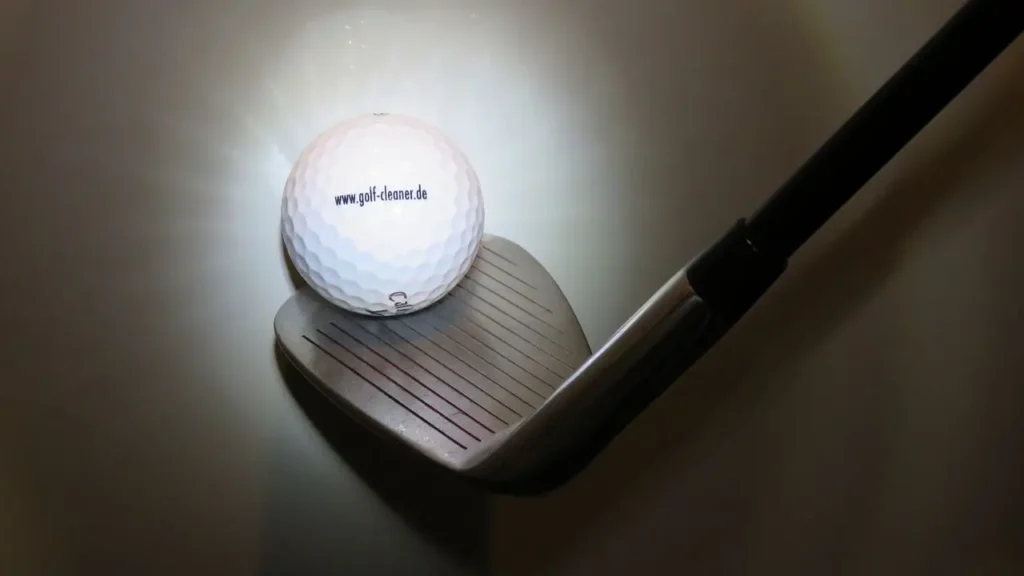
Tips for Using the 50 and 52-Degree Wedges
When it comes to golf, the right wedge can make all the difference.
It’s not just about distance but also control and trajectory. So, how do you make sure you’re using your 50- or 52-degree wedge to its full potential?
Here are a few tips:
- Know your yardage: One of the most important things to know when using a wedge is how far you can hit it. This will help you choose the right club for each shot and avoid landing short or overshooting your target. Take some time to practice with both your 50- and 52-degree wedges so you know exactly how far each one goes.
- Use the right swing: Using a wedge requires a different swing than your long-game clubs. For both the 50- and 52-degree wedges, focus on a smooth, controlled swing rather than trying to hit hard for distance. This will give you better accuracy and more control over your shots.
- Master greenside bunker shots: The 50-degree wedge is perfect for getting out of greenside bunkers, while the 52-degree wedge can be used for longer bunker shots or tricky lies around the green. To get out of bunkers effectively, aim to hit about an inch behind the ball with an open clubface and plenty of loft.
- Experiment with trajectory: Both Vokey Design wedges offer great options for changing up trajectory on approach shots. The higher loft of the 52-degree wedge allows for more spin and height on shots that need it, while a lower trajectory shot with a bit less spin could be better suited to using a stronger-angled club like a pitching wedge instead.
Ultimately, choosing between these two wedges comes down to what suits you best as an individual golfer based on personal preferences in distance control and accuracy as well as specific conditions faced on courses.
I highly recommend trying out different brands and models to find the perfect wedge for your game. But, with a solid understanding of each club’s capabilities and some consistent practice time, average golfers will be well on their way to elevating their short game to new heights!
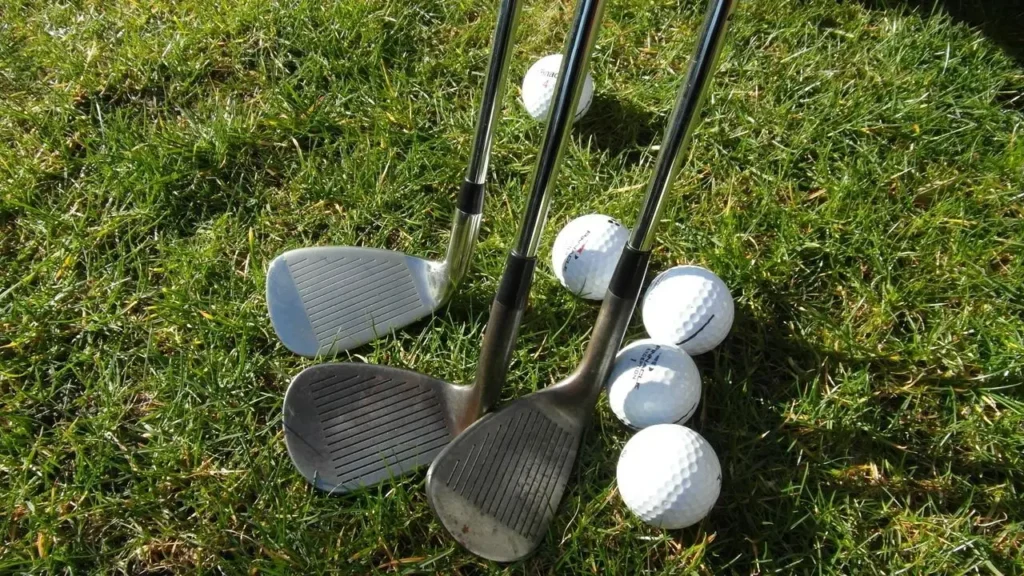
Conclusion
The decision between a 50- and 52-degree wedge should not be taken lightly.
It’s important to assess your own game and your specific needs when choosing a wedge. If you need more precision shots closer to the green, a 52-degree wedge might be a better option for you.
However, if you’re looking for more distance on full shots, then a 50-degree wedge may be best. Ultimately, it comes down to personal preference and skill level.
If you’re an average golfer who struggles with bunker shots or greenside pitches, then having both gap wedges in your bag could be beneficial. On the other hand, choosing one or the other could suffice if you’re confident in your long game but just need some help with those tricky shorter distances.
It’s important to note that different brands offer different loft options within their pitching wedges and hybrids as well. When deciding which golf wedge to choose or add to your bag, it’s worth doing some research on which brand offers the loft and distance that suit your swing and trajectory.
Overall, understanding the differences between a 50-degree and a 52-degree wedge is crucial for any golfer looking to improve their short game. Don’t overlook this important aspect of the game, whether it’s choosing one specific club or adding both gap wedges to your arsenal, as it can make all the difference in lowering those scores on fairways and greens alike!
Share this Post
Toni Benedito
Keep Reading
Follow Us
Recent Posts

How Do Pro Golfers Get Paid? The Business of Golf
Professional golfers get paid both before and after tournaments. Before a tournament, they receive appearance fees, sometimes exceeding $1 million, to attract top players. After the tournament, earnings depend on their placement, with the PGA

How Much Do Golf Players And Pros Make? You Won’t Believe It!
Professional golfers earn substantial incomes through tournament winnings, sponsorship deals, and endorsements. Top players on the PGA Tour can make millions annually, with significant earnings from prize money and lucrative brand partnerships. For example, Rory

The Shocking Cost: How Much Does It Cost to Fly with Golf Clubs?
Flying with golf clubs can be a hassle, but it’s worth it for avid golfers. Costs vary by airline, ranging from $30 to $150 per way. Southwest Airlines offers a generous policy, allowing one set

Why Do Golfers Tape Their Fingers Before Hitting the Course?
Golfers tape their fingers to prevent injuries from repetitive motions, provide support for existing injuries, and improve grip comfort. It’s a popular technique among amateurs and pros alike, offering a lightweight and effective solution compared

How Much Does a Round of Golf Cost? Are You on Par?
The cost of a round of golf varies widely based on factors like course type, location, and time of play. Public courses typically range from $30-$100 per round, while exclusive ones like Augusta National or

Hidden Fees: How Much Does It Cost To Rent a Golf Cart
Wondering how much it costs to rent a golf cart? Explore factors like location, rental duration, and cart type impacting prices. Daily rates range from $50 to $80, while weekly rentals can vary from $200
Table of Contents







